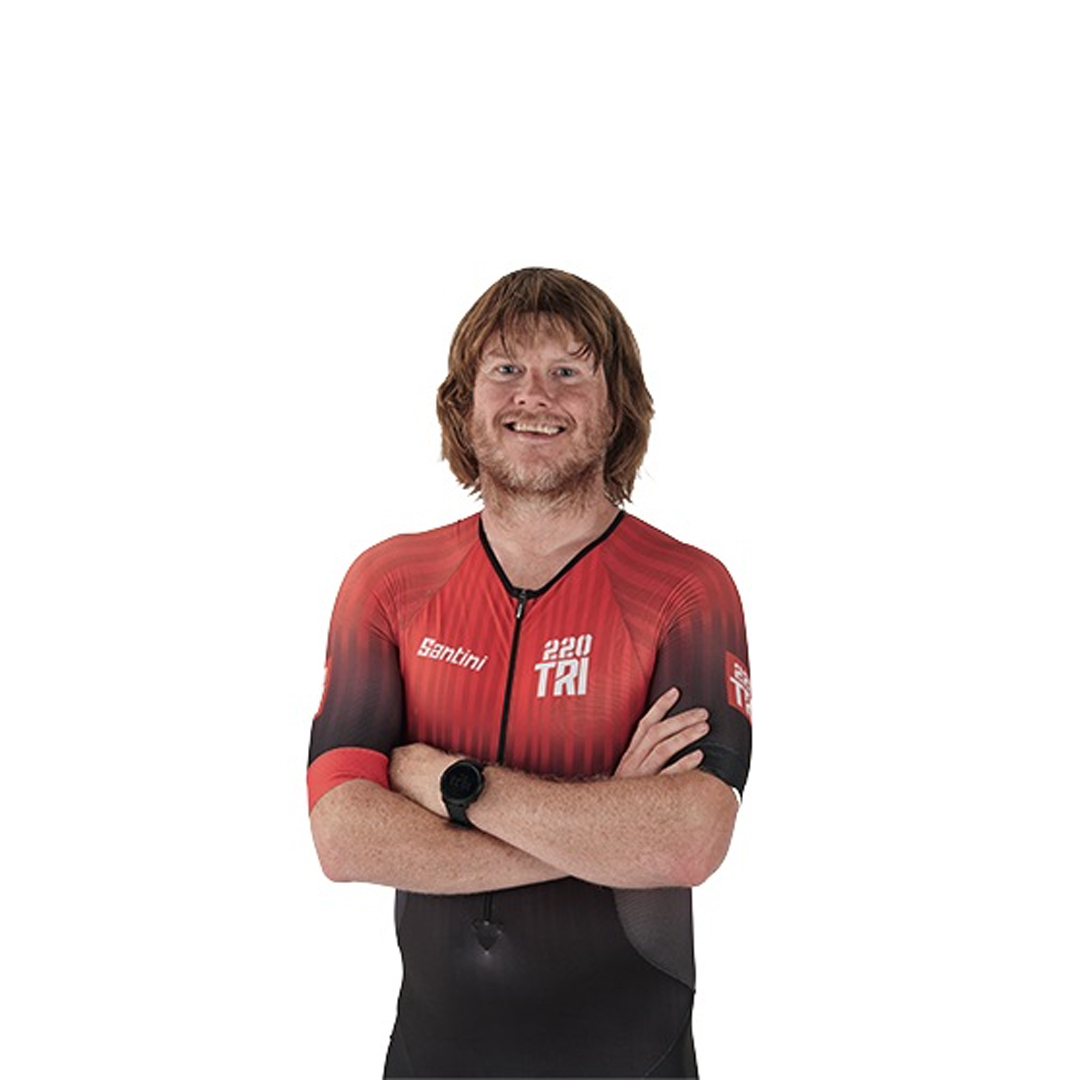You’ve exited the swim, shaken yourself down, pulled yourself out of your wetsuit and are ready to conquer the bike followed by the run. That requires generating power and reducing drag on two wheels, before holding a good pace on the final leg that won’t leave you firing up like an incinerator.
That might be the top line, but have you ever dug a little deeper into some of the physics and forces at play? Have you ever wondered why the faster you go, the more face-on the wind seems? Or why your tri-suit’s woven from a particular fabric? You have? Excellent news…
Aerodynamics matter
When it comes to the bike, and to a much lesser degree the run, aerodynamics count. This is one
reason why: aerodynamic drag is cubic. What does that mean when seen through the prism of triathlon? Simply, that doubling your bike speed requires eight times as much power; in other words, the faster you go, the greater the air resistance.
It’s why air resistance rather than friction, like from rolling resistance of your tyres, takes over as the dominant factor holding you back once you’re riding above around 16km/hr.
A large cross-sectional area is also a large detriment to your new PB, an increased area resulting in an increased amount of air resistance. Place your hand out the car window on your next drive. Rotate it between the vertical and the horizontal and you’ll see what we mean.
This aerodynamic drag is quantifiable as it’s the resistance attributed to an object and one given the term CdA. This is an abbreviation for the co-efficient of drag. It’s a dimensionless number that’s the result of a body’s drag size, shape and surface texture. CdA ranges upwards of zero.
Physics dictates that an object with a drag co-efficient 0 can’t exist. Something that’s very much real are teardrop-shaped bars, which can register a figure of 0.005. That’s aero. A brick might be 2.0. Not surprisingly, that’s not aero.
CdA examples of elites using aero-shaped bars might come in at the 0.18-0.25 mark. For a good amateur triathlete, that’d be more like 0.25-0.30.
“The aim is to deliver a good CdA but one that you can hold.” Those are the words of David McNamee, one of the greatest long-course male athletes this country’s produced, his list of achievements including two third spots at Ironman Hawaii (2017 and 2018).
We caught up with the Scot over Zoom from his base in Girona, Spain to understand the process of slippery speed.
“It’s all about bike position. It’s easy for me to ease into an incredibly aerodynamic position but is it sustainable,” he says?
“Less so now but certainly five years ago you’d see so many Ironman athletes who’d storm the start but would then fall back as they just couldn’t hold the position. This was particularly true at Hawaii where athletes would be caught up in the occasion, fly off… and then around 60km out they’d be off the aerobars and on the hoods.
If you look at Hawaii last year, that’s changed. Athletes’ positions aren’t as aggressive and they’ve learnt to apply consistent power in a sustainable position for 180km.”
This is key because research shows that an athlete’s metabolic stress increases when reducing the trunk to femur angle. If the function of the diaphragm and intercostal muscles is compromised by a restricted position on the bike, you’ll find your desire to breathe outweighs your desire to slice through the wind.
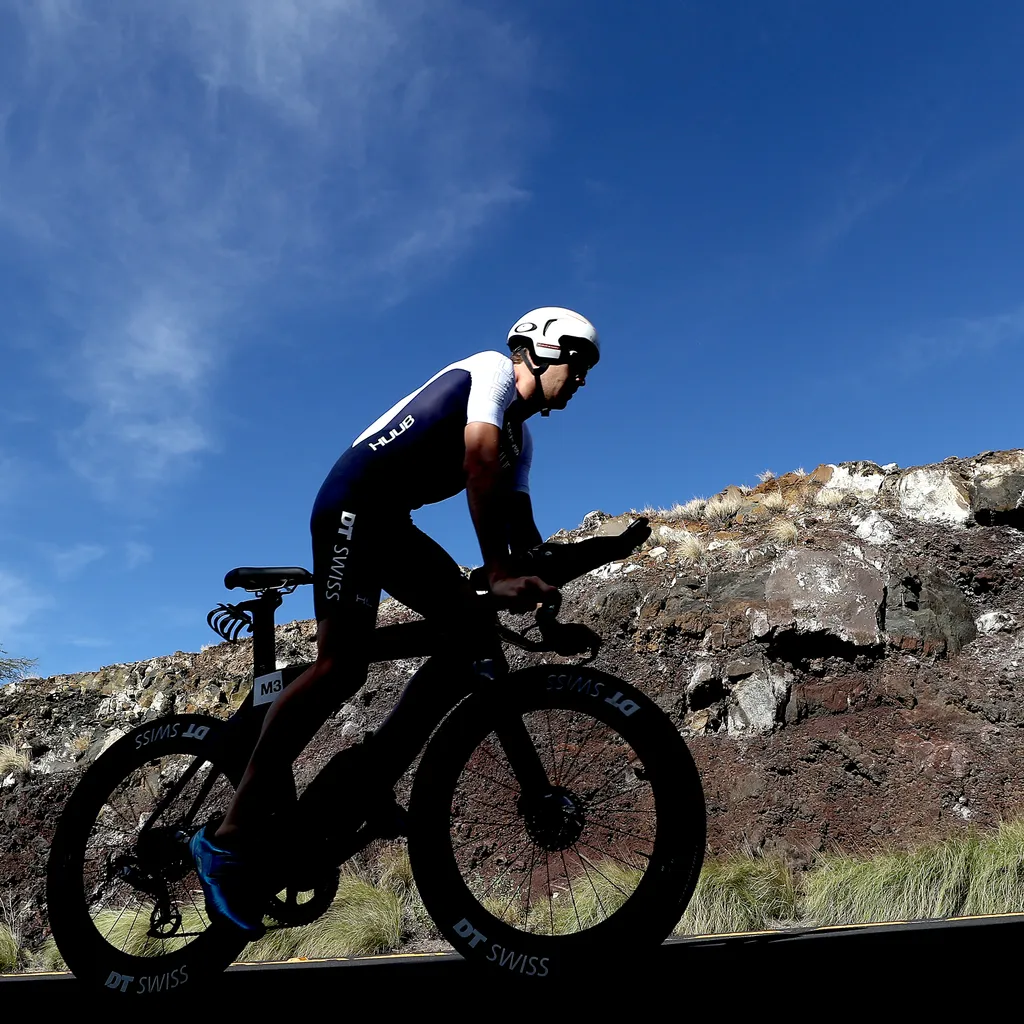
Higher, Faster, Stronger
The science behind why so many athletes seek rarefied air in the search for peak performance…
Why does David McNamee train in Font Romeu, around two-and-a-half hours away from his Girona base? And why are the Brownlees regulars in St Moritz? Because at over 1,800m above sea level, they’re both perfect locations for altitude training.
But why? Well, the aim of altitude training is simple: by exposing the athlete to an environment low in oxygen (more specifically, a lower partial pressure of oxygen – oxygen percentage is constant but the fall in atmospheric pressure decreases the partial pressure of inspired oxygen), the body will adapt by becoming more efficient at transporting and using oxygen. And as triathlon’s predominantly an endurance event, where oxygen rules, the result is an improvement in performance.
According to studies, training at altitude increases aerobic capacity (VO2max) by 3-8%; lowers heart rate, both at rest and during exercise; elevates levels of myoglobin, the muscle protein; reduces lactic acid build-up; and facilitates greater production of EPO from the kidneys.
EPO, or erythropoietin, is like nectar to triathletes as it’s a hormone produced in the kidneys that stimulates the production of red blood cells. Red blood cells are vital for an endurance activity like cycling as they collect oxygen from the lungs and deliver it to working muscles.
The greater the number of red blood cells you have, the more oxygen you can carry, the harder and longer you can swim, cycle and run, the faster you go. Perfect!

Evolution of speed
McNamee’s a powerful athlete but, in the world of marginal gains, wattage just isn’t enough. You need to hone that CdA. Test, refine, test and refine. It’s something he realised early on his multisport career.
“When I first started in long-course racing, there were hardly any triathletes doing aero testing. The only ones were the superstars of our sport, like Jan Frodeno and Sebastian Kienle, and that was really down to the bike companies they were sponsored by. Aerodynamic testing just wasn’t part of the multisport fabric.
“That was around 2017 and I got chatting to Dean [Jackson, founder of Huub]. He said they’d just started working with a chap called Dan Bigham, a smart guy based in Derby who was undertaking testing at Derby Velodrome. Dean invited me to the track and the differences were dramatic.”
That won’t surprise those of you with a keen eye on the cycling world as 31-year-old Bigham broke the hour record in August 2022, recording a distance of 55.548km around the Grenchen Velodrome in Switzerland.
An incredible effort achieved despite generating an average power output of ‘just’ 350 watts. That was around 100 watts lower than Sir Bradley Wiggins’ record-breaking effort of 2015. In short, his positioning and equipment steered him to immortality.
McNamee credits Bigham and the Huub team for his consistent top-level performance and of remaining pragmatic.
“Our aero testing never results in slamming the front end down or squeezing the elbows tight in, which I find really uncomfortable,” he says. “It’s all about sustainable speed.”
Bigham’s currently less hands-on as he’s performance engineer at Ineos Grenadiers, a role that saw him help Italian Filippo Ganna break his hour record in October 2022 with a distance of 56.792km.
Now, it’s his former teammate in the Huub WattBike team-pursuit set-up, Jacob Tipper, who’s charged with helping the likes of McNamee, 2019 Ironman Hawaii winner Anne Haug, 2021 Ironman World Championships runner-up Kat Matthews and the legend that is Alistair Brownlee.
“I’m actually with Alistair now,” Tipper tells us from St Moritz, Switzerland. “We’re here for altitude training.”
Aiming high in search of further gains is something we delve into in the Higher, Faster, Stronger box, above. Now, we’re more focused on the process of helping triathletes cut drag and ride faster, all the while preserving enough energy for the run.
“We regularly use the wind tunnel at Silverstone and still use the velodrome at Derby. Both have advantages and limitations. The velodrome offers a more real-world position as you can play around with what’s sustainable or not.
"Straight away, you have feedback. It might look great but if you can’t hold that position for two minutes, scrap it.
“When you’re in the wind tunnel, you enjoy very precise measurements as it’s so controlled. The problem is that you simply stick your head down, look at the front skewer and pedal away. That’s not really real world.
"Still, it does give you some useful information and is particularly beneficial for a static object like observing the effect of the bottle cage on the frame.”
This real-world application is why the likes of Tipper play around with yaw angles.
“We have our own positional protocol that depends on the rider, their speed and sometimes the upcoming course. We rarely test at 0° because that doesn’t really exist in the real world, but we might work through 3°, 5°, 8° and 12°.
"Speed really comes into things here as the higher the speeds, the lower the yaw angle, whereas that 12° yaw angle’s rare unless it’s a particularly windy day at Kona as you’re racing alongside the coast for the whole day.”
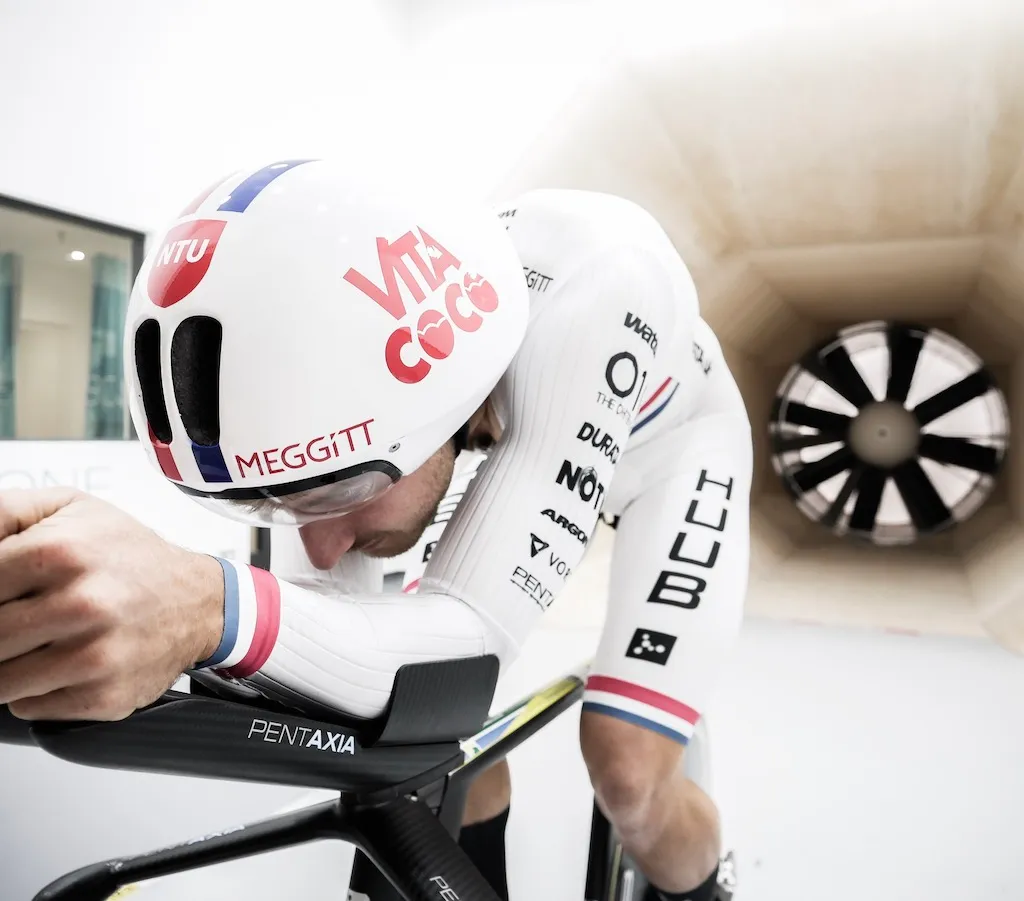
Keep cool in the heat
As the mercury rises, your performance can tumble. But losses can be improved with these techniques…
Acclimatise to the heat
This is where you train in the heat to prepare for racing in the heat. A couple of simple ways to prep for a hot race in the UK are by training indoors without a fan in the build-up to your race. You could also crank up the heating, albeit this’d cost a fortune. Or have a hot bath straight after a session. Research shows that moderate exercise immediately followed by a 15min bath in 40°C waters over six days where bathing time rose by 5mins each day resulted in a 4% improvement in 5km time-trial time in the heat.
Plan your hydration
A meticulous strategy’s a must. But how much should you drink? A simple sweat test helps here. Run for 40mins, ideally in hot conditions. Drink nothing from start to finish. Weigh yourself before and after and see how much weight you’ve lost. If you’ve lost, say, 660g, that’s around a kilogramme over an hour. That equates to a litre of fluid. Sadly, the stomach would struggle to tolerate that much fluid per hour while running, but around 700ml should be possible. That’s one large water bottle or, more conveniently, a hydration backpack. And remember, sipping is better than downing in one go.
Build fitness
Studies show that as fitness grows, triathletes experience a host of adaptations that are conducive to racing fast in the heat. These include greater evaporative heat dissipation through improved sweat response and greater sensitivity of sweating response to increasing core temperature. Improved aerobic capacity also leads to elevated plasma volume and cardiac output, which minimises the competition for blood distribution between skeletal muscle and skin.
Speed clothing
This speed-specific physical impact naturally leads us to one of the hottest aerodynamic topics of the past couple of years – speed-specific clothing.
“When we started looking into aero clothing, we’d focus on striped fabrics, which were great for tripping air and great at high speeds,” Tipper explains. “But then we had the option to spend time in a fabric tunnel, which we didn’t have before.
"So we’d go to a fabric convention, pick out a load of fabrics that we liked the look of that might have a good amount of stretch or breathability and you can print on them, and then take them to the fabric tunnel and test at different speeds on different cylinder sizes.
"Simply put, we discovered that these stripier fabrics weren’t always the best at lower speeds; in fact, there were substantial differences between fabrics and optimum speed at 30km/hr, 40km/hr and so on.”
Key to aerodynamic efficacy is something known as the boundary layer. Essentially, this is a thin (1-4mm) layer of air that flows over your body while either cycling or running.
Typically, it flows in a laminar state with minimal energy in the flow and can quite easily separate off the body around curvature and changes in shape, creating a large draggy wake behind.
However, using correctly sized and shaped texture, you can induce the boundary layer to turn into a turbulent state.
The advantage of this is that the boundary layer is now energised and can resist changes in curvature and shape around the body, staying attached for longer and reducing the size of any low-pressure wakes.
On the confusing side, this is affected by speed, meaning fabric type and seam placement should theoretically differ depending on your abilities.
It’s why Huub designs and creates two versions of their top-end Anemoi 2 tri-suit: the SUB22 and the PLUS22. The former’s designed for optimum drag-free performance at under 22mph, the latter over 22mph.
It’s innovative stuff and one step closer to the ideal, which is the customised clothing enjoyed by the likes of Haug and McNamee from Huub’s Custom Labs, which takes into account not only speed but factors like cylinder size (aka your body) and panel sizing.
“To take things a step further, we’ll spend time in the wind tunnel with our top athletes to work on clothing as well as positional improvements,” says Tipper.
“We spent four days in the wind tunnel with Anne [Haug] purely working on a suit. We’d already optimised position, helmet choice… but we wanted to test a matrix of fabrics on her 50kg frame and see how she responds. It’s good for Anne and good R&D for us, which can then trickle down to age-groupers.”
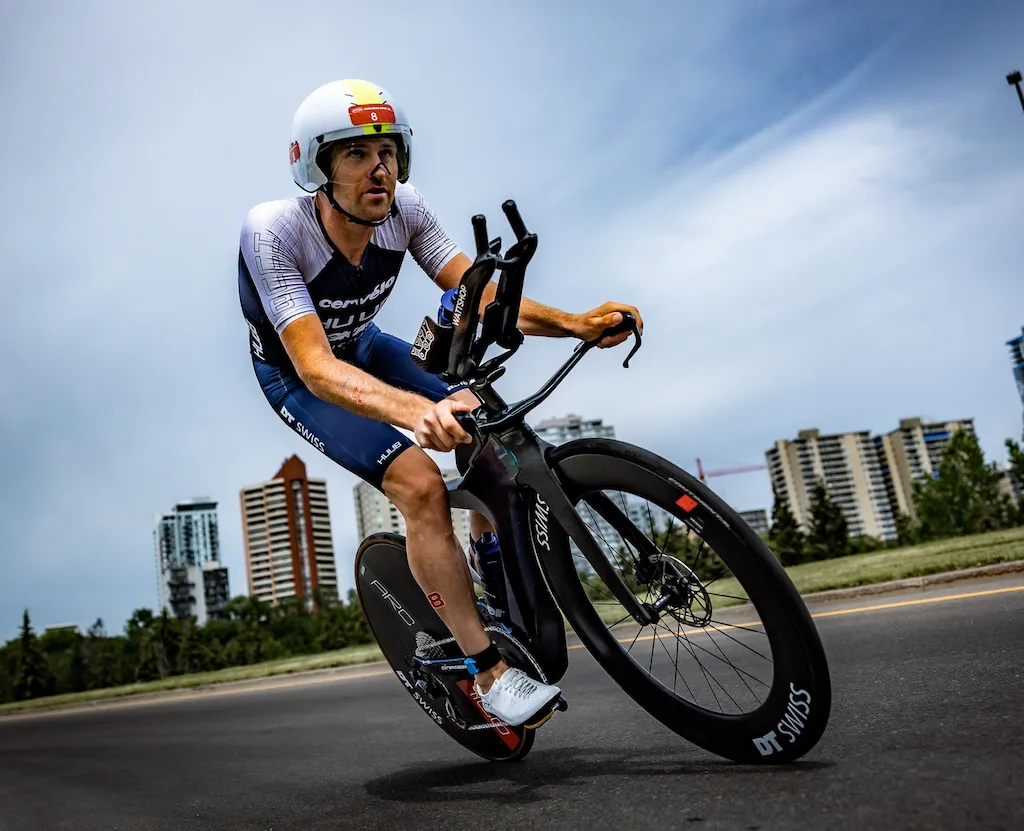
Aero on a budget
Cut drag and boost speed without breaking the bank…
Clip-on aerobars
A seven-grand triathlon bike might mean curves, concealment of cables and cash, but a set of £40 aerobars clipped onto your existing road bike saves you far more time per pound. Aluminium numbers are the cheapest; carbon adds cost but saves weight. But when it comes to aerobars, positional leverage is more important than weight-saving material with the bars easing you into a more streamlined position to cut through the air. Just ensure you practise in training to acclimatise your body to this new stretched-out set-up.
Time saved: 1:40mins over 40km
Cost: From £40
Shoe covers
Neoprene bike-shoe covers can rescue winter riding, their thermal properties keeping your feet warm on frozen rides. But don’t neglect their lightweight siblings, often comprised of a stretchy elastane and nylon mix, which cut drag all-year round. (Just note they’ll increase T1 time ever-so slightly so will pay great dividends over longer races.)
Time saved: 30secs over 40km
Cost: From £17
Hand position
Every facet of the bike and ride has an impact on aerodynamics – and that includes hand position. Wind-tunnel data suggests that an ‘arrow grip’ on tri-bars, with the tips of the fingers touching, gives a 0.54sec saving for every minute ridden at 35mph compared to a rider using a traditional thumbs-inside aerobar grip.
Time saved: 10secs over 40km
Cost: Free
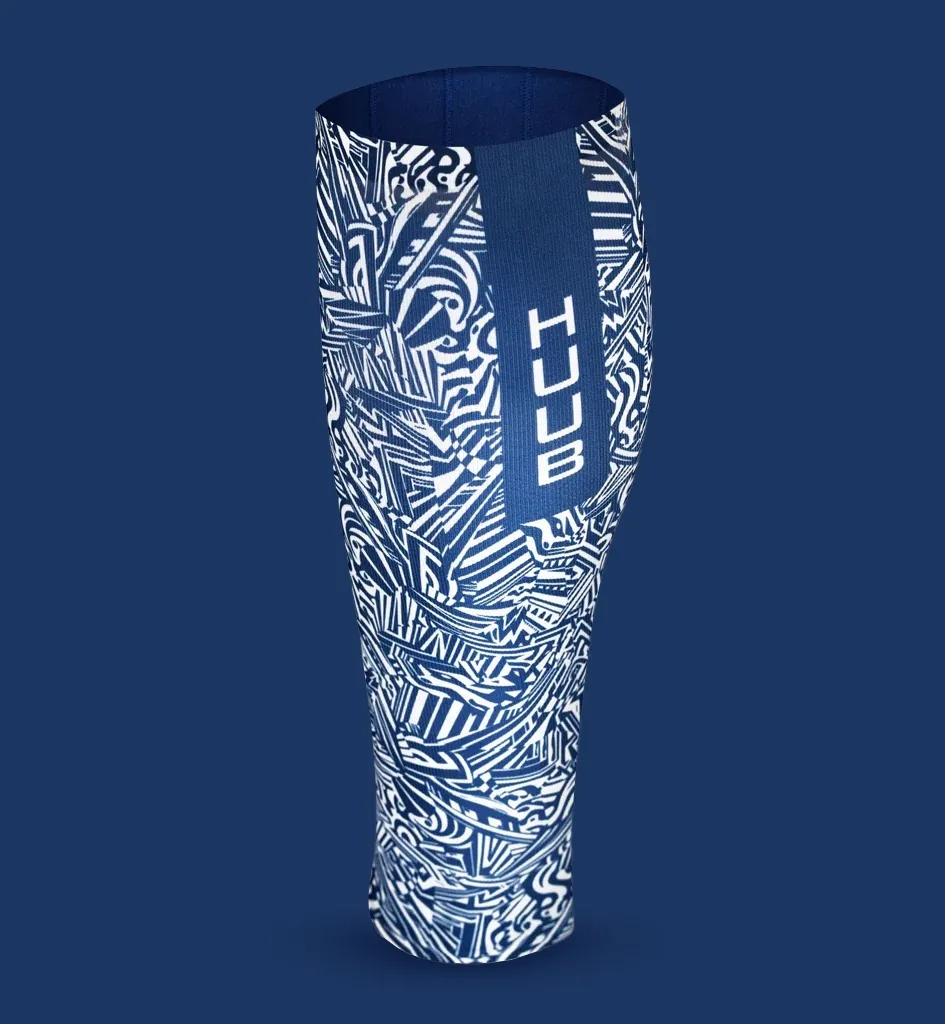
Some like it hot…
In the case of Haug and Matthews, it's optimising aerodynamics in an effort to perform in Kona. But carving a path of least resistance through the Hawaiian air’s null and void if you don’t account for the fact that it’s usually damn hot.
As McNamee’s palmares highlights, he seemingly excels in the heat, surprising perhaps for a Scottish-bred athlete. “It does help, though, that I have a couple of suits, one for the heat and one for more moderate conditions.”
This is particularly beneficial for the run, which lacks the airchill you enjoy when cycling, though like positioning is once again a balancing act in search of the perfect multisport performance.
“I’ll say to athletes that this fabric is better for the hot run but it might cost you three or so watts on the bike,” says Tipper. "Then it’s down to the athlete to make the decision. Often the hot suit will be chosen because of the unique demands of the triathlon run.
“A standalone city marathon starts early so it might be 14°C, whereas in Hawaii you’re often running at the hottest part of the day because you’ve had to swim 3.8km and ride 180km. It’s tricky, though it’s something we look to address via different coatings.”
McNamee says his suits are sprayed before Kona, though that wasn't needed this year as not only was the men’s race in Nice but he didn't race due to nerve damage from a 2014 crash that flares up on long descents. Instead, he’ll aim for 2024 qualification at Ironman Italy on 16 September [McNamee finished second].
Whether he’ll require a coating of coolant remains to be seen. What’s clearer is that he’ll utilise a further aerodynamic accessory of recent times: the calf sleeve.
“I’m a big fan of the new 3:Sixteen Aero Calf Sleeve that many of the athletes used in the Sub7/Sub8 Challenges last year,” McNamee says. “For me, they’re around six watts quicker on the bike.”
How is again down to physics. By stretching a smooth fabric over ribbed fabric (raised ridges form a suspension of material like a suspension bridge), airflow is disrupted by the ridge and then altered further by the suspended fabric, causing miniscule air particles to enhance displacement of the boundary layer.
It’s technology adapted from the company’s Aero-Bridge™ undervest that sits beneath a speedsuit and is designed for speeds of 45-55km/hr.
It’s cutting-edge stuff and is designed to maximise every session and perform at every race. But not in autocratic fashion.
The likes of Huub know the science and can create the products to improve aerodynamics without leaving you a burning mess, but it’s down to the athlete, be it McNamee, Matthews or an age-grouper, which path they’ll follow.
“Ultimately, you can’t change the laws of aerodynamics and physics. That’s why we’ll give the athlete information but it’s down to them what positional and clothing choices they make. Whatever level you’re at, you must be accountable.”
Top image credit: Ezra Shaw/Getty Images for Ironman
